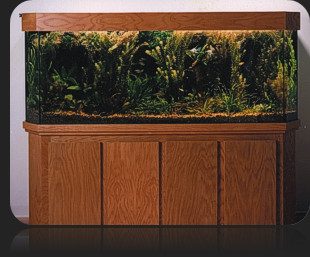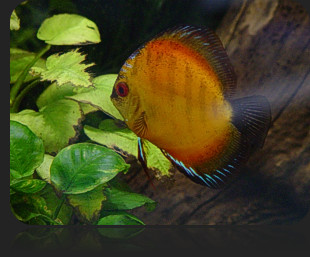 |
home page Aquarium Adventure carries the widest selection of aquariums, fish, corals & plants. |
| ABOUT USAQUATIC PROFESSIONALSLOCATIONSTIP SHEETSFRANCHISE |
 |
||
| We offer everything from do-it-yourself pond equipment and starter sets to full custom installation packages. Our experts can answer those really tough questions about installing and maintaining garden ponds...a service the hardware stores cannot provide. Come visit our store and take a tour! |
||
 |
||
 |
||
|
||
 |
||
Fill the tank half full of water, once the substrate has been added. Next, add plants, rocks, and driftwood to recreate your environment. Refer to our Biotope Series showing how to landscape different niches. Be sure the tank is setting level, then finish filling the tank with water. Place the heater in the tank, but do not turn it on at this time. Allow the heater glass to acclimate to the water temperature in the aquarium for one (1) hour before plugging it in. You can camouflage the heater behind the driftwood and plants. Equip the aquarium with a filter system. If using an undergravel filter, hook up the air pump or power head (water pump) to the uplift tubes. If using an internal filter, place it in the tank towards the back and hide the filter using plants or driftwood.
Now place the aquarium top in position and make any adjustments (cut outs in the back) to accommodate the heater, filter, and cords. Turn on the light (a 10-12 hour light cycle is highly recommended) and heater. Make any final adjustments to the heater in order to stabilize a temperature between 74-78 degrees. All newly set-up aquariums must go through a filter conditioning process in order to sustain fish life (see our “New Tank Water Conditions” tip sheet). It will take the water approximately 4-6 weeks to condition, during which time only a small number of fish can be added to the tank. Once the aquarium has been set up and running for a minimum of 24 hours, six (6) 1.50 inch fish per 10 gallons of water can be safely introduced. Over the next several weeks when the water quality tests of Ammonia and Nitrite reach zero, more fish species can be added.
Partial water changes are the single most important procedure you perform on your aquarium. Remove 30% of the water every two (2) to three (3) weeks and replace it with fresh water which has been treated with a water conditioning chemical. Clean unsightly algae using an algae pad or magnetic algae remover when necessary. Keep in mind that some algae left in the tank can be beneficial, as it provides a food source for certain fish, and also creates oxygen for the aquarium environment.
View All Fish Keeping Tip Sheets
|
||

 Setting Up the Aquarium
Setting Up the Aquarium If an outside filter is being used, place it on the outside back of the tank, or under the aquarium. Hide the siphon tube (which draws water from the tank to the filter) with tall plants or driftwood. Put the thermometer in place, add water conditioner to the aquarium, and turn on the filtration system. After testing the pH and water hardness, necessary adjustments can be made using proper aquarium chemicals to recreate specific environments.
If an outside filter is being used, place it on the outside back of the tank, or under the aquarium. Hide the siphon tube (which draws water from the tank to the filter) with tall plants or driftwood. Put the thermometer in place, add water conditioner to the aquarium, and turn on the filtration system. After testing the pH and water hardness, necessary adjustments can be made using proper aquarium chemicals to recreate specific environments. Feeding the fish will vary depending upon the age of the aquarium. Early on, during the first 4-8 weeks, the fish should be fed a small pinch of food (about the size of a dime) once every other day. As the aquarium ages and becomes established (2-4 months of age), fish can be fed once a day. When the tank is over 4 months old, the fish can be fed several times a day, but use small quantities of food at each feeding.
Feeding the fish will vary depending upon the age of the aquarium. Early on, during the first 4-8 weeks, the fish should be fed a small pinch of food (about the size of a dime) once every other day. As the aquarium ages and becomes established (2-4 months of age), fish can be fed once a day. When the tank is over 4 months old, the fish can be fed several times a day, but use small quantities of food at each feeding.